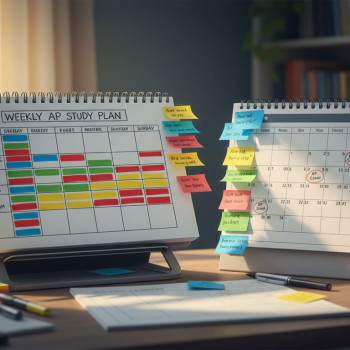Why ‘No Name-Dumps’ Is the Single Best Habit for AP Comparative Government
If you’re in the thick of AP Comparative Government, you’ve probably been told to memorize facts about the six course countries: China, Iran, Mexico, Nigeria, Russia, and the United Kingdom. But memorizing names, dates, and lists alone — what I call “name-dumping” — rarely helps you on the exam. It makes answers bloated, unfocused, and hard to score. Instead, the smart approach is to build case knowledge organized around concepts and comparative arguments. When you can explain how a political concept shows up across different contexts, you demonstrate the depth and flexibility graders want to see.

Big Picture: What AP Comparative Government Really Tests
At its core the course asks you to think like a comparative political scientist. That means:
- Recognizing political concepts (legitimacy, sovereignty, authoritarianism, democratization, rule of law, political culture).
- Applying those concepts to real-world states thoughtfully rather than reciting lists of facts.
- Comparing across cases to explain similarities and differences with evidence.
- Interpreting and using quantitative and qualitative sources (tables, charts, short texts).
- Writing structured, evidence-based free response answers.
Every high-scoring response ties concept + case evidence + comparative analysis. If you anchor your study in those three elements, name-dumps fall away naturally.
From Name-Dump to Narrative: A Three-Step Method for Case Knowledge
Rather than memorizing everything about a country, build a compact, portable story for each case using three steps: Core Profile, Concept Hooks, and Evidence Bank.
1) Core Profile (1 paragraph, 2–3 bullets)
Write a tight snapshot you can recall in one breath. Include regime type, political structure, and one defining historical/political factor. Example structure:
- Regime/Structure: Parliamentary/Presidential/Authoritarian/Hybrid.
- Key Political Feature: dominant party, federalism, revolutionary legacy, state capacity.
- Contemporary Consideration: recent reform, economic shock, demographic trend.
Keep it to a sentence or two. That’s your mental “file folder” for the country.
2) Concept Hooks (3–5 items)
List 3–5 political science concepts that the case exemplifies well. For each hook, jot a one-line explanation of how the concept appears in that country. For instance, for a case known for strong centralization, put “State Capacity — centralized policymaking, limited regional autonomy”.
3) Evidence Bank (3 items: quantitative, institutional, anecdotal)
Choose three compact pieces of evidence you can use across prompts: a succinct statistic or trend, one institutional detail (e.g., electoral rules, separation of powers), and a short anecdote or historical turning point. These are the building blocks you’ll plug into essays and comparisons — not long paragraphs, just precise, usable facts.
Why This Works: Transferable Knowledge Beats Rote Recall
Grader rubrics value how well you apply concepts and analyze sources. If you can take a concept and show it at work in two countries — with evidence — you’re doing the intellectual work the exam requires. This method reduces cognitive load: instead of storing hundreds of random facts, you store 6–8 high-utility items per country. That’s autonomy; you can adapt quickly during a timed exam.
Exam-Ready Example: Turn a Name-Dump into a Comparison
Imagine a prompt asking you to compare how political culture influences participation in two course countries. A name-dump answer lists civic organizations and turnout numbers. A concept-driven response uses a short comparative claim, concept-based explanation, and two pieces of evidence per country.
| Component | Weak Name-Dump | Smart Concept-Based Answer |
|---|---|---|
| Thesis | “Country A has NGOs and Country B has low turnout.” | “Differences in political culture — civic trust vs. distrust of institutions — explain divergent patterns of participation in Country A and Country B.” |
| Concept Use | Lists organizations, turnout numbers. | Explains how political socialization and trust shape collective action and turnout. |
| Evidence | Several disconnected facts about civil society history. | One recent survey statistic + one electoral rule detail + one concise historical example per country. |
| Comparative Insight | None — just separate descriptions. | Shows mechanism: how culture interacts with institutional incentives to increase or suppress participation. |
This structure maps directly onto the FRQ rubric: claim, evidence, explanation, and comparison. It’s efficient and persuasive.
How to Build Your Case Files — Weekly Routine
Turn case-building into a habit. Here’s a weekly 45–60 minute routine that grows your conceptual case knowledge fast:
- 10 minutes: Review the Core Profile for one country — read it aloud and refine language until it’s concise.
- 15 minutes: Add two new Concept Hooks; write one-sentence explanations for each.
- 10 minutes: Add one quantitative and one qualitative evidence item to the Evidence Bank.
- 10–25 minutes: Practice writing a 10–12 sentence comparative paragraph that uses your hooks and evidence.
Repeat with a different country each week. Over a month you’ll have strong, flexible case files for all six course countries.
Using Sources and Data Like a Pro
The exam loves data. But data without interpretation is just noise. Your goal is: identify the pattern, connect it to a political concept, and explain the implication.
Quick Data Walk-Through (3 steps)
- Observe: What does the chart or table show? State the trend in one clear sentence.
- Interpret: Which political concept explains the trend? (e.g., electoral volatility, social cleavage, economic liberalization)
- Apply: What does this mean for the case’s political outcomes? Connect to institutions or behavior.
Example: If a graph shows declining party membership while turnout remains steady, you might interpret this as weakening party institutionalization but persistent electoral engagement via new mobilization channels — a hook for discussing realignment or clientelism. Always tie the data to a political mechanism.
Free Response Tips: Structure That Scores
The free-response section rewards clarity. A short roadmap helps graders follow your reasoning — and it helps you organize under time pressure.
3–Paragraph Mini-Blueprint for Most FRQs
- Intro/Thesis (1 paragraph): Make a direct comparative claim that answers the question and previews the reasoning.
- Body (1–2 paragraphs): For each claim, present evidence and explain how it supports the claim. If the prompt asks for comparison, dedicate a paragraph to the comparative mechanism (how and why cases differ or resemble).
- Conclusion/Implication (short paragraph/sentence): Tie back to the concept and, if relevant, note a broader implication or limitation.
Keep language crisp. Use phrases like “This illustrates,” “Therefore,” and “By contrast” to signpost reasoning. Graders skim for evidence of argumentation and causal logic — make both obvious.
Active Practice: What to Do the Week Before the Exam
Ahead of the exam, quality practice beats endless new content. Here’s a targeted countdown plan for the last 7–10 days:
- 3–4 timed full-length FRQs: Practice the full rubric. Time yourself and mimic exam conditions.
- 2 source-analysis drills: Practice reading a short passage or chart and writing a tight paragraph interpreting it and connecting to a concept.
- Daily 20-minute case review: One country per day — Core Profile, 3 concept hooks, two evidence items.
- Bluebook/Platform practice: If the exam is digital, practice typing or using the testing interface so you don’t lose time to unfamiliar tools.
Consider mock grading: swap responses with a classmate or tutor and score each other against the rubric. Look for missing causal explanation or weak evidence — those are the most common score leakers.
Study Tools That Don’t Feel Like Chore
Studying smart is also about keeping energy and motivation high. Use a mix of short, active tasks rather than long passive review sessions.
- Flashcards for Core Profiles & Concept Hooks (digital or paper).
- 1–2 practice FRQs per week graded against the rubric.
- Timed data interpretation sprints using graphs from course materials.
- Study group sessions that practice comparative explanations aloud — teaching is the best test of learning.
If personalized help fits your budget and schedule, targeted 1-on-1 guidance can accelerate progress. Sparkl’s personalized tutoring, for example, offers tailored study plans, expert tutors, and AI-driven insights that help you turn weak name-lists into strategic comparative arguments. A short series of sessions can transform how you approach FRQs and improve the quality of your evidence selection.
Common Pitfalls and How to Avoid Them
- Overloading with facts: Less is more. Two precise, explained pieces of evidence beat a paragraph of disconnected facts.
- Failing to explain the ‘why’: Always answer how the evidence supports the claim.
- Using case detail that’s irrelevant: If a fact doesn’t serve the mechanism you’re explaining, drop it.
- Neglecting the comparative mechanism: Don’t just describe two cases. Explain the causal link that makes them comparable.
Real-World Thinking: Use Current Events to Build Conceptual Muscle
AP Comparative Government rewards global awareness when it’s used to illustrate a concept, not to show volume. Read one short, reliable news or analysis piece weekly and do a two-paragraph write-up: identify the political concept, summarize the link to the case, and note how it might appear in another course country. That practice trains your mind to spot mechanisms in real time — the exact skill you’ll use on the exam.
Time-Saving Hacks for Exam Day
- Read all parts of a multi-part prompt before writing: make sure you answer everything asked.
- Start with a 2–3 sentence thesis that clearly answers the question.
- Use your Evidence Bank: plug in one quantitative, one institutional, and one short anecdote per case where relevant.
- Leave 3–4 minutes for a quick proofread or to add a clarifying sentence that strengthens causal logic.
How Graders Think — and What They Reward
Graders look for clarity, relevance, and reasoning. They do not reward lists. Here’s what impresses them:
- A precise claim that addresses the prompt directly.
- Evidence that is clearly tied to the claim.
- An explanation of the causal mechanism or comparative logic.
- Concise, well-organized prose that makes the argument easy to follow.
Practice writing so that your argument can be skimmed — it helps graders confirm you met the rubric quickly and confidently.
Sample Mini-Practice Prompt and High-Scoring Response Outline
Prompt (paraphrased): Explain how electoral rules influence party systems in two course countries. Use specific evidence.
- Thesis: “Electoral rules shape incentives for party formation and coalition-building — proportional representation encourages multiparty systems and coalition governments, while first-past-the-post tends to favor two-party or dominant-party outcomes.”
- Country A (Proportional): Core Profile + one institutional detail (seat allocation method) + one statistic or recent election outcome. Explain mechanism: low threshold encourages small parties to survive.
- Country B (Majoritarian): Core Profile + electoral rule detail + recent result showing concentration of seats. Explain mechanism: winner-takes-all amplifies major parties and discourages fringe party survival.
- Comparison: Tie to political outcomes — coalition governance vs. dominant-party stability; mention a trade-off (representation vs. stability) and conclude with implication for governance.
Long-Term Value: Why This Skillset Matters Beyond the Exam
When you learn to think comparatively and connect data to causal stories, you gain a toolset that matters for college-level political science, public policy, and informed citizenship. You’ll be able to read news with nuance, weigh arguments, and craft evidence-based essays — skills that professors and employers value.
Final Checklist — A Day Before the Exam
- Review Core Profiles for all six course countries (one paragraph each).
- Scan your Evidence Banks — make sure you have one quantitative and one institutional fact ready per country.
- Complete one timed FRQ and one data-interpretation question.
- Pack exam essentials and practice using the Bluebook app (if applicable).
- Rest well and do a short walk or light exercise to clear your head.
Small, smart habits in the final days compound quickly. Focus on clarity, mechanisms, and evidence — not raw volume of facts.
Where to Get Extra Help (Without the Noise)
If you find certain skills stubborn — maybe data interpretation or crafting comparative mechanisms — targeted tutoring can help close the gap efficiently. Personalized 1-on-1 guidance with an expert tutor helps you build tailored study plans, improve weak writing habits, and get AI-driven insights into error patterns. A few sessions focused on FRQ technique and case structuring often yield immediate score improvements because they change how you approach the prompts.
Parting Advice: Study Like a Thinker, Not a Library
AP Comparative Government isn’t a trivia contest. It’s an invitation to think about how political power is organized and why it produces different outcomes across societies. Replace lists with mechanisms. Replace name-dumps with tight, evidence-backed comparisons. Treat every source — chart, paragraph, or law — as a clue about a political process. If you do that, your answers will feel alive, persuasive, and — crucially — scorable.
Be methodical in building your Core Profiles, Concept Hooks, and Evidence Banks. Practice interpreting data in three steps (observe, interpret, apply). Use timed FRQs to make your writing clear and concise. And when you want a productive shortcut, consider brief personalized tutoring sessions that target your specific weaknesses and accelerate your path from rote memory to strategic mastery.
Good luck — and remember: the best comparative answers don’t impress by how many names they drop; they impress by how clearly they explain the world.
























No Comments
Leave a comment Cancel